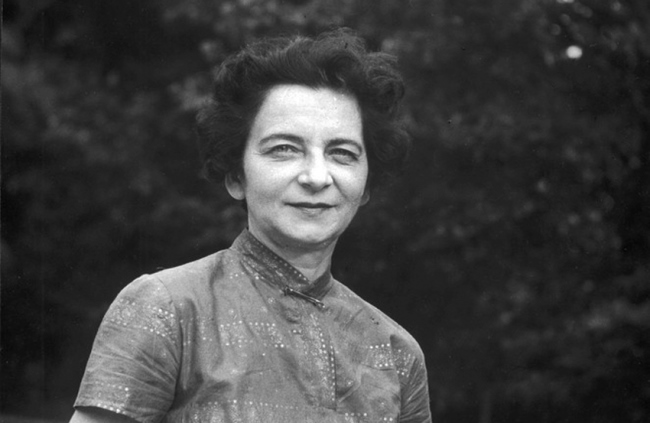Alfred Schnittke, Symphony No. 5
by Peter Laki
Born November 24, 1934 in Engels, Russia (Soviet Union)
Died August 3, 1998, in Hamburg, Germany
Composed in 1988
Premiered on November 10, 1988 with the Royal Concertgebouw Orchestra conducted by Riccardo Chailly
Performance Time: Approximately 37 minutes
Almost twenty years after his death, it is becoming increasingly clear that Alfred Schnittke was one of the few composers for whom the traditional genres of symphony (with more than 200 years of uninterrupted history) and the concerto grosso (a Baroque genre revived around the 1920s) had always retained their relevance. What is more, Schnittke was able to breathe new life into these old forms, in constant dialogue with the musical past but approaching that past like no one had ever done before.
Between 1972 and 1994, Schnittke composed nine symphonies and six concerti grossi, for a total of fourteen works since the present composition was counted twice: it is both a concerto grosso (No. 4) and a symphony (No. 5). In fact, the four-movement work begins as a concerto grosso and morphs into a symphony, merging the two genres into a single, monumental orchestral statement that seems to reverse the classical “darkness-to-light” dramaturgy of many classical symphonies from Beethoven to Mahler: this time, the path of the music leads from (relative) light straight down into (absolute) darkness.
As many commentators have noticed, Mahler was always a central reference point for Schnittke. The composer’s friend and biographer Alexander Ivashkin saw Mahler as the source of Schnittke’s “sense of irreconcilable conflict,” and he quoted the following illuminating sentence from a review by Richard Taruskin: “With a bluntness and an immodesty practically unseen since the days of Mahler, Mr. Schnittke tackles life-against-death, love-against-hate, good-against-evil and (especially in the concertos) I-against-the-world.”
The work begins with a rather simple and straightforward trumpet tune, but it is immediately distorted by the dissonant second voice supplied by the second trumpet. This tune functions as a Baroque ritornello of sorts; it is also heard as played by the concertino or small group, in this case, a violin, an oboe, and a harpsichord. In the course of the movement, the three solo instruments don’t always play as a unified group pitted against the orchestra: they also have individual solo passages and sometimes join in the orchestral tuttis as well.
The Mahler connection becomes explicit in the second movement, which in fact is based on the second movement Mahler planned for his Piano Quartet in A minor but never finished. This quartet, Mahler’s first surviving composition, was written in 1876 when the composer was sixteen and was just beginning his studies at the Vienna Conservatory. Since its first publication in 1973, the completed first movement has established itself in the chamber music repertoire, but the second movement, from which only a short fragment exists, has been known only from the appendix of the first edition. The editor, German composer Peter Ruzicka, saw the makings of a Scherzo here, but the surviving music hardly seems to bear out that description; it would be closer to the mark to call it an “intermezzo” in the Brahmsian sense. In any case, it was upon this fragment that Schnittke built his movement (which is not at all scherzo-like), presenting Mahler’s melody in a wide variety of instrumental guises, adding some rather dissonant counterpoint. At the very end, we hear the music as Mahler wrote it, in the original piano quartet scoring—and in this context, it almost sounds like a work by Schnittke written in a 19th-century style! (Schnittke himself called attention to the very unusual modulation from G minor to A major found in Mahler’s fragment.)
The third movement, the longest of the four, is also “Mahlerian,” although it contains no actual quotations. But it uses echoes of funeral marches and chorales like many of Mahler’s symphonies, and some passionate agitato figures in the violins also recall the Austrian master. Only in the Schnittke, the dramatic contrasts are even greater, the “conflicts” even more “irreconcilable,” thanks to an intensely chromatic harmonic language and a highly unusual orchestration emphasizing the lowest instruments in the orchestra, the tuba and the contrabassoon. The main theme of the movement, surprisingly, is identical to the jolly little tune with which the first movement opened—only in extreme slow motion and in the lowest register. Out of this material, Schnittke constructed a movement full of high drama, followed without a pause by the fourth movement, an extended, slow epilogue, in which we hear the first movement’s little ditty made to sound positively tragic. An implacable series of drumstrokes, first heard early in the movement, return at the height of the gigantic final fortissimo, after which the music gradually fades into silence.
Schnittke composed this majestic work for the Concertgebouw Orchestra in Amsterdam, which gave the first performance under Riccardo Chailly on November 10, 1988. Three years after suffering the first of four major strokes, the composer was just entering a remarkably productive late period, which lasted until shortly before his death a decade later.
Peter Laki is Visiting Associate Professor of Music at Bard Conservatory of Music.

